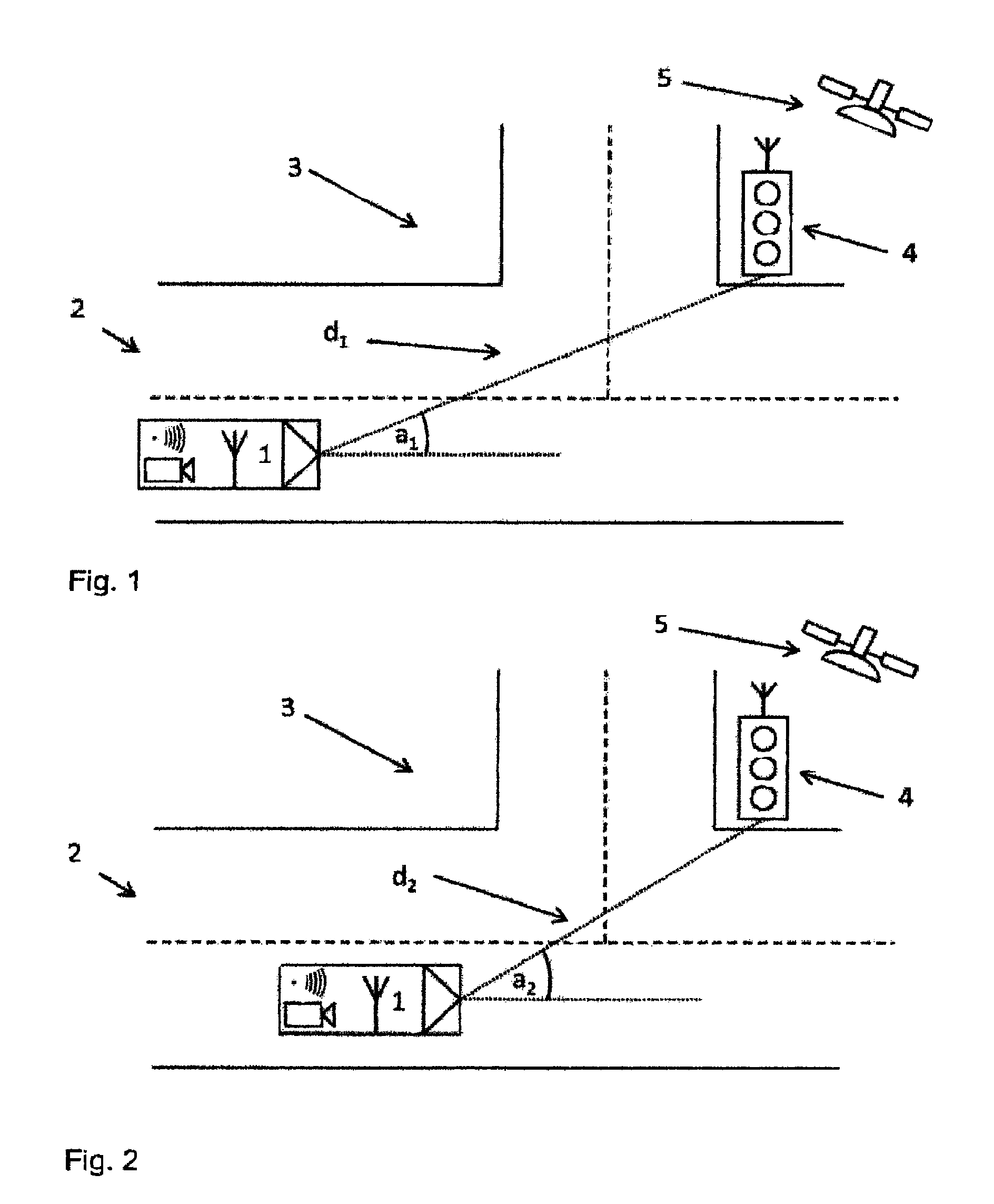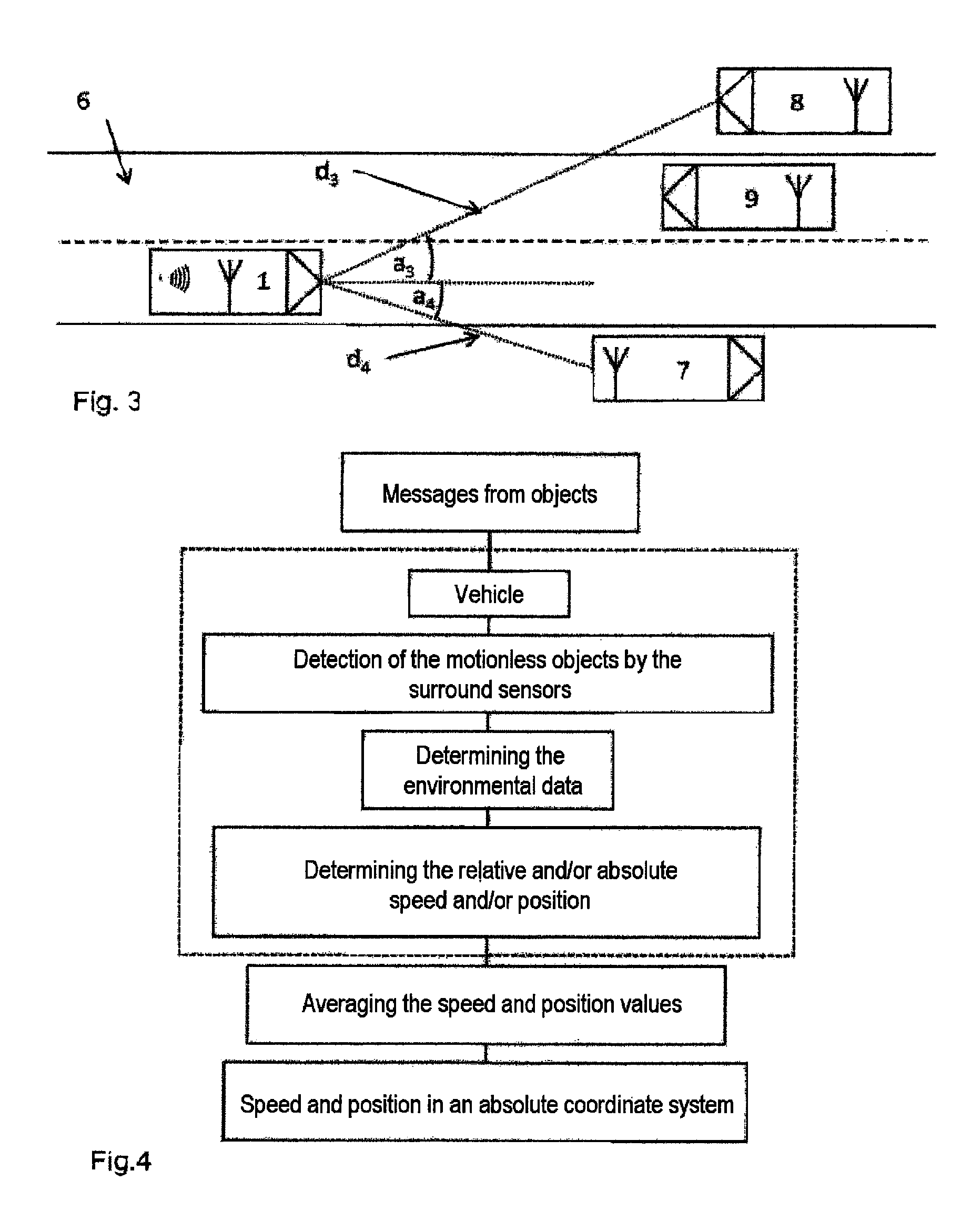Method and device for determining the speed and/or position of a vehicle
a technology for determining the speed and/or position of a vehicle, applied in the direction of control devices, external condition input parameters, instruments, etc., can solve the problems of prone to major errors, difficult to determine in particular the position value, and inconvenient to determine the position value, so as to estimate the position and/or speed of the driver's vehicle more simply and reliably
- Summary
- Abstract
- Description
- Claims
- Application Information
AI Technical Summary
Benefits of technology
Problems solved by technology
Method used
Image
Examples
Embodiment Construction
[0034]FIG. 1 shows a vehicle 1 located on a roadway 2. The vehicle 1 is moving towards a crossroads 3 at which a motionless object 4 is located. The motionless object 4 is a set of traffic lights arranged in a stationary manner on the opposite side of the crossroads 3 from the vehicle.
[0035]Both the vehicle 1 and the set of traffic lights 4 participate in the vehicle-to-environment communication. As part of the standardized vehicle-to-environment communication, the set of traffic lights 4 transmits messages. These messages contain the speed, position and dimensions of the set of traffic lights 4. Since the set of traffic lights4 is a stationary object, the speed is equal to zero. The vehicle 1 receives these messages by its antenna. In the processing unit of the vehicle 1, this message is analyzed and it is established that a motionless object is in the surroundings.
[0036]Then the set of traffic lights 4 is detected by surround sensors of the vehicle 1. The surround sensors are a ra...
PUM
 Login to View More
Login to View More Abstract
Description
Claims
Application Information
 Login to View More
Login to View More - R&D
- Intellectual Property
- Life Sciences
- Materials
- Tech Scout
- Unparalleled Data Quality
- Higher Quality Content
- 60% Fewer Hallucinations
Browse by: Latest US Patents, China's latest patents, Technical Efficacy Thesaurus, Application Domain, Technology Topic, Popular Technical Reports.
© 2025 PatSnap. All rights reserved.Legal|Privacy policy|Modern Slavery Act Transparency Statement|Sitemap|About US| Contact US: help@patsnap.com



